For many wrestlers, wrestling is their life. Something they dedicate many years of their life to, honing their craft and attempting to create memories for the fans that last forever. Yet many have to retire mid-life due to the wear and tear the sport has on their body: building injuries, their lack of abilities with their ageing bodies and lack of wanting to travel can be just some of the reasons legends hang up the boots for good. These, however, continued their in-ring days, managing to step inside the ring over 5 different decades (or perhaps more!).
Mae Young: 30s (disputed), 40s, 50s, 60s, 70s, 90s, 00s, 10s
Getting into wrestling in her mid-teens, it has been said by Mae that she started wrestling in the 1930s (although no official records indicate this), meaning she perhaps wrestled across 9 different decades across 71 years. To put this in perspective, her career spanned both the Chamberlain administration as World War 2 broke out and the invention of the iPad.
Helping women’s wrestling develop alongside The Fabulous Moolah post-Pearl Harbor when many men were too busy fighting overseas. Legend of the industry Ed “The Strangler” Lewis claimed of Young that “I don’t like girl wrestlers, women should be in the kitchen, but after seeing you, you were born to be a wrestler!”. Alongside the likes of Mildred Burke, Moolah and June Byres – Moolah wrestled for the NWA, picking up many variations of the women’s title before retiring at an unknown point (likely the early 70s) for over 20 years.
/cdn.vox-cdn.com/uploads/chorus_image/image/27183927/mae.0.jpg)
Mae came out of retirement in 1993, wrestling for the Ladies International Wrestling Association until 1998. She then had a run in the WWF, having wrestled 2 previous matches for the company in the late 60s and early 70s. She infamously fell in love with Mark Henry, becoming pregnant and giving birth to a hand. She also wrestled Moolah for the Women’s championship, often teaming with her lifelong friend to battle Ivory. She had sporadic matches over the 00s.

Her final match – if you can call it that – was a match where she beat LayCool in a handicap match on a WWE Old School Raw special with the help of the face women’s locker room. This match saw the 87-year-old octogenarian manage to pin the then-co-Divas titleholders in what would turn out to be her last before passing away aged 90 in 2014.
Dusty Rhodes: 60s, 70s, 80s, 90s, 00s, 10s
![Shitloads Of Wrestling — The Texas Outlaws [1969] In 1968, Dusty Rhodes...](https://64.media.tumblr.com/2abc2f94995dfdeff66397b5f210692a/tumblr_nforfuuTbQ1rg89a6o1_1280.jpg)
The son of a plumber, “The American Dream” Dusty Rhodes debuted in 1967. In this era, he formed the memorable Texas Outlaws team alongside Dick Murdoch, becoming an international tandem. In 1974, Rhodes turned face, forming the working-class, common man persona. Whilst still wrestling for the NWA, he competed in the WWWF, often challenging for the world title.
Rising in popularity, he would grow to his greatest success in Jim Crockett Promotions in the 1980s – having 3 NWA title reigns and feuding with the likes of Ric Flair, Tully Blanchard and Harley Race. The southern, blue-collared man of the people was a huge star for the promotion, a brilliant promo and someone the fans adored – making him a top face of the 80s.
From 1989 until 1991, Rhodes had a pitstop in the WWF. As a punishment for his association with a rival promotion, Dusty was ribbed (a wrestling insider term for pranked) by now jiving and being donned with polka dots. Feuding with Randy Savage and Ted DiBiase, he remained a fan favourite but in a lower card role. Dissatisfied, he moved back to WCW, mostly in a non-in-ring capacity, although he would turn heel and join the NWO in a forgotten and rather unnecessary swerve.
Rhodes wrestled in the first quarter of 2000 for ECW, almost exclusively rivalling with “King Of The Old School” Steve Corino and Jack Victory. He then had a brief WCW return to restart a feud with Ric Flair before moving to TNA – where he quite frequently wrestled for the company in their early days. Returning to the independent circuit to fight some old foes such as Terry Funk, Kevin Sullivan and Barry Windham.



He made a return to WWE in 2006 with fellow legends to fight the Spirit Squad, being victorious at Survivor Series that year. His last major match would see him unsuccessfully face Randy Orton in a Bull Rope Match at 2007’s Great American Bash. His final match took place in 2010 in a 6-man tag where he emerged victorious with his sons Cody and Dustin against The Dude Busters and Curt Hawkins at an FCW show.
Roddy Piper: 70s, 80s, 90s, 00s, 10s
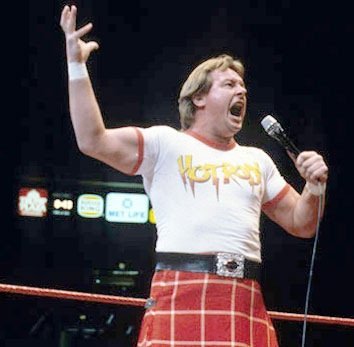
Throughout the 70s, Roddy Piper started to make a name for himself, wrestling for promotions like the AWA and the NWA’s Pacific-Northwest and Mid-Atlantic territories amongst others. Despite some fame, he would find his biggest popularity surge in the 80s. Debuting in Jim Crockett Promotions in the early 80s, he became a 2-time US champion, feuding with Sgt Slaughter, Ric Flair and most significantly Greg Valentine – with whom he would have a bloody, brutal Dog Collar Match at the inaugural Starrcade in 1983 in about causing Piper permanent hearing loss for 50-75% of his left ear.
It was the WWF in the mid-80s that propelled him to icon status. As a huge draw, Piper could draw heat like no other on the mic and in the ring for his despicable acts like kicking Cyndi Lauper and shaving an unwanting Haiti Kid. His whole role as a reviled heel justified the existence of WrestleMania as the main event due to his hatred for Hulk Hogan and Mr T. Having laid the blueprint for future WWE talk shows, how to draw audience rage and craft a chaotic promo – “Rowdy” Roddy retired in 1987. He would return in 1989, mostly in a non-wrestling role but did have some matches such as his half-black face against Bad News Brown.
He would win the IC title off of The Mountie in 1992 in his only singles title win in the WWF before losing it to Bret Hart in a match filled with classic in-ring psychology at WrestleMania 8. He would wrestle for WCW from 1996-2000 as one of the company’s top stars. He would face Hulk Hogan in a series of main event matches but never won the WCW title with the result always somewhat inconclusive. He would pick up a short US title reign, however.


Piper would wrestle several matches for the WWE in the 2000s when aligned with Sean O’Haire or fighting the Ortons. However, his most memorable moment was briefly winning the WWE World Tag Titles alongside Ric Flair, beating the Spirit Squad amidst a nostalgia return run (one cut short by Piper’s cancer diagnosis). “Hot Rod” wrestled 7 matches in the 2010s, including a Raw match against The Miz for $5,000, winning with aid of guest referee Alex Riley. Piper would last wrestle in 2011 prior to his death in 2015.
Jerry Lawler: 70s, 80s, 90s, 00s, 10s, 20s
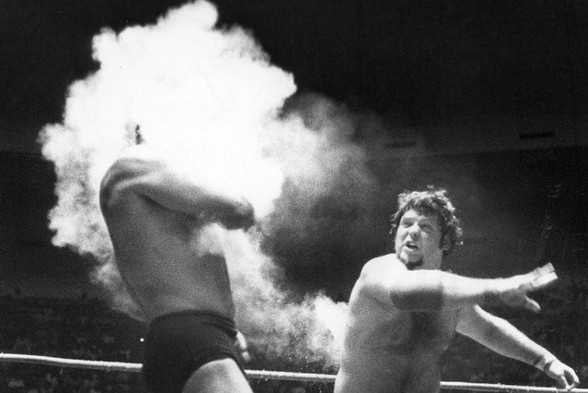
Having held about 150 titles in his eclectic career, Lawler was most significant in his hometown of Memphis. As a face in Continental Wrestling Association, he was a top star in the 70s for the promotion. His fame grew greatly on a national scale due to his headline-grabbing feud with Saturday Night Live comedian Andy Kaufman. After a few years in the organization, Lawler won his biggest title on a commercial scale when beating Curt Hennig for the AWA title in 1988 – he would further unify this with the WCCW title after beating Kerry Von Erich.
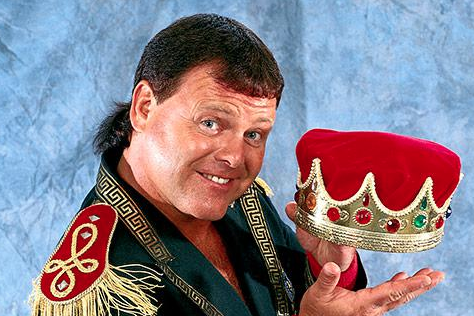
Whilst simultaneously being one of the most prolific and iconic world titleholders in Memphis’s USWA, he worked for the WWF. Holding the King’s Court segment, he was often a commentator but did occasionally get into the ring. Lawler had hit-or-miss feuds with Bret Hart, many ECW originals and Jake Roberts during his stint as the royal, mischievous trash-talker in the 90s. In the 2000s, he wrestled everywhere under the sun while still employed with WWE – sometimes ditching the commentator role to take on some of the new, evil heels on the scene.
In 2012, he wrestled his last WWE match due to suffering a heart attack afterwards, he would continue to wrestle in other promotions though. He has also wrestled post-pandemic at the turn of the decade, with his most recent match (at time of writing) seeing him beat Big Cass via DQ in May 2021.
Greg Valentine: 70s, 80s, 90s, 00s, 10s

The owner of some of the most beautiful blond locks in wrestling history, Valentine is a second-generation talent who jumped between the WW(W)F and Mid-Atlantic during the 70s and 80s. During this time, he memorably broke Wahoo McDaniel’s leg before donning a t-shirt reading “I Broke Wahoo’s Leg” as well as his brutal chain match with Roddy Piper. After winning the Mid-Atlantic world title, TV title and tag titles with the likes of Baron Von Raschke and Ric Flair – he made a permanent jump to the WWF from the mid-80s to early 90s in that time gaining many accolades.
In the WWF, Valentine won the World Tag Titles with Brutus Beefcake and won the Intercontinental title (becoming the first person to win the US title, then in an NWA belt, and the IC title). Technically the first person to fight in a match at WrestleMania for every eligible belt, Greg eventually left after an impressionable run, unhappy with his role in the company due to his treatment in the prior years. He jumped to WCW in 1996, where he had a small presence, getting lost in the shuffle of the busy WCW card.

“The Hammer” became one of the first old-timers to utilize the Indy scene, wrestling across a number of companies with less exposure through the 2000s and 2010s, picking up a paycheck along the way. The 69-year-old technician is yet to wrestle in the 2020s – but don’t rule it out!
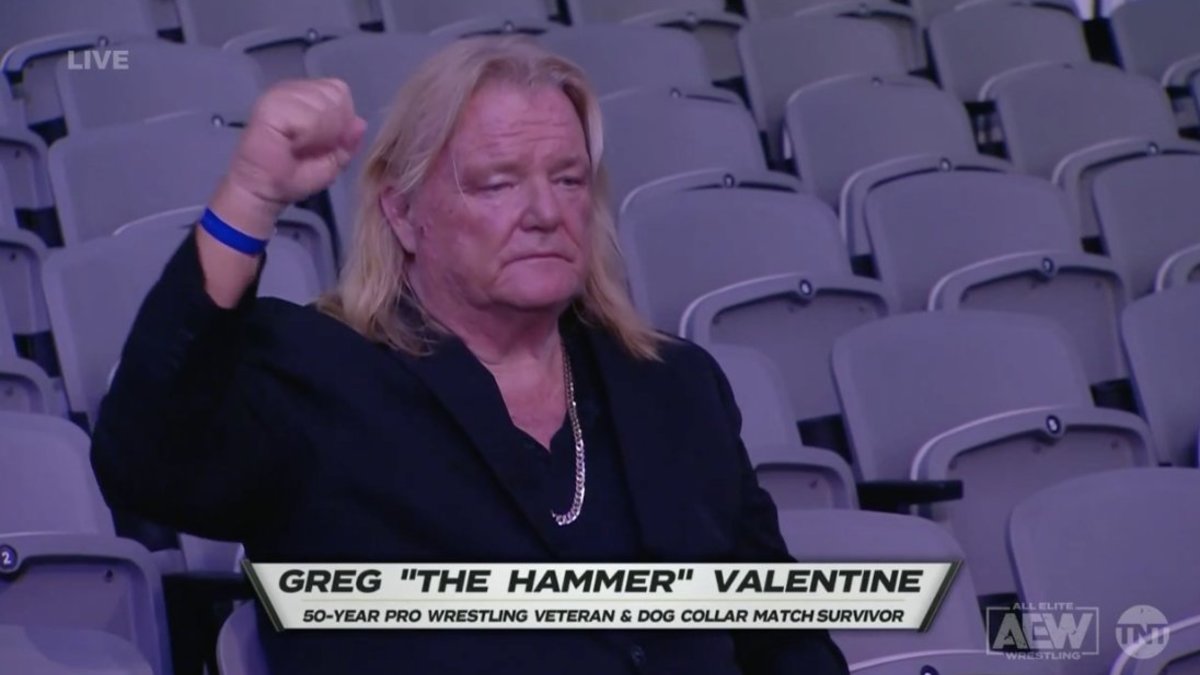
Sting: 80s, 90s, 00s, 10s, 20s
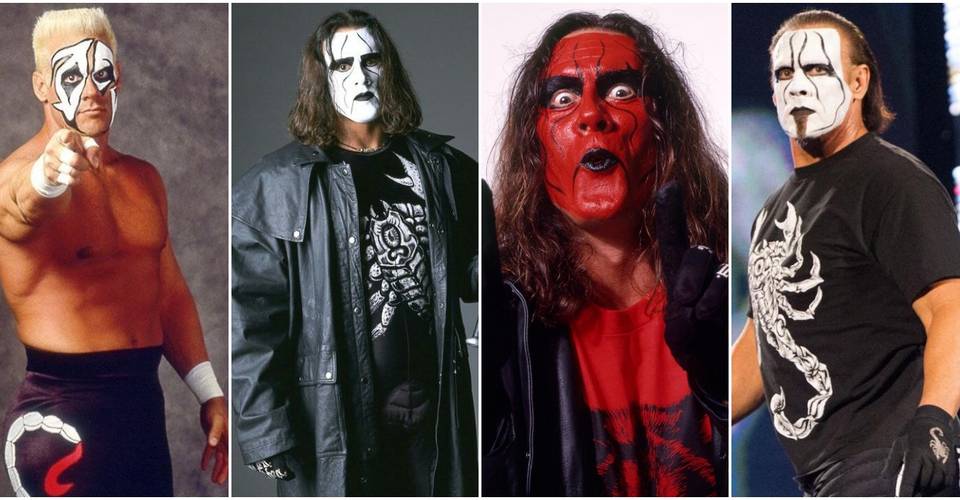
Making his debut in the mid-80s, starting out as a jobber in a tag team with the future Ultimate Warrior in the CWA and UWF and “The Stinger” had established himself as a rising future star in Jim Crockett Promotion by the end of the 80s by winning the NWA Television title and sharing the ring with icons such as Ric Flair and Terry Funk.
The neon face-painted surfer enjoyed great success in the 90s as a multi-time world champion and becoming the face of WCW. One of the biggest babyfaces in wrestling in the early-mid 90s, he soon realized that times were slowly changing and his bright, valiant character may soon become passé so evolved into the dark, bleak, fighter for justice – this gimmick being inspired by Brandon Lee’s role in The Crow. This iteration would be his most memorable, bringing Sting fame during his decade-long run in TNA after WCW’s death. Sting’s run saw him win their version of the world title 5 times spanning both the NWA and TNA titles as well as being their first Hall of Fame inductee in 2012.

In 2014, “The Vigilante” made his debut for the WWE at that year’s Survivor Series event, starting a rivalry with The Authority. This triggered a WrestleMania match against Triple H which the former WCW World champion lost. After some insignificant matches on Raw, he wrestled Seth Rollins for the WWE title at Night of Champions 2015 but a huge mid-match injury hindered the match and seemingly closed the book on the then-56-year-old’s career.
In December 2020 however, Sting made a shock debut for AEW, where he has since won 2 tag matches, being undefeated in the promotion in 2021, still yet to suffer a loss as of time of writing.
Terry Funk: 60s, 70s, 80s, 90s, 00s, 10s

In terms of legends in wrestling, perhaps no one has a better claim to that title than Terry Funk. It would take a full encyclopedia to list the career of the Texan from the Double Cross Ranch.
In the 60s, Terry made his name alongside brother Dory in his father’s Western States Sports promotion in Amarillo, Texas. In 1975, he beat Jack Brisco for the NWA World title, defending the belt across the globe and toppling top names – eventually holding onto the strap for 14 months.
During the 80s, Funk had a brief WWF stint; chewing tobacco, carrying a branding iron and wearing cowboy attire, he was a big challenger to WWF champion Hulk Hogan in the mid-80s. He also memorably feuded with Ric Flair in WCW in 1989 – with Funk joining Gary Hart J-Tex Corporation. Funk attacked Flair after “The Nature Boy” beat Ricky Steamboat at WrestleWar – a feud filled with memorable moments like Funk trying to suffocate Flair with a plastic bag and their Meltzer-rated 5 star I Quit Match.
In the 90s, Funk underwent a mass career-altering run, becoming even more violent, dedicated and extreme. This was sparked by his memorable Japanese deathmatches in the IWA King of The Deathmatch encounters with Mick Foley. Funk won the ECW World title in 1997, having main evented the company’s first PPV event. Funk then had his 1997 retirement show WrestleFest (his retirement lasted 11 days). He even returned to the WWF in this decade as Chainsaw Charlie where he actually held tag gold with an old friend and foe, Cactus Jack, winning them at WrestleMania 14.
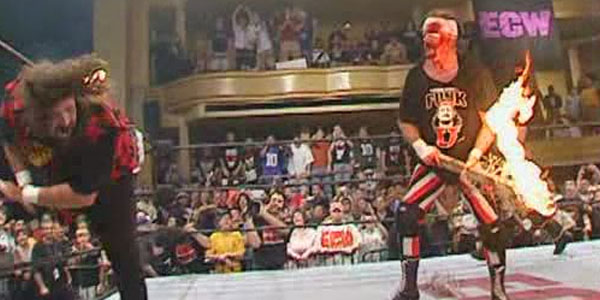
Over the 2000s and 2010s, Funk would retire and return a plethora of times. He found himself in WCW in 2000, winning both the Hardcore and United States title belts on top of being commissioner at one point in time. In 2006, he wrestled at the One Night Stand ECW tribute event, not wrestling at the previous year’s instalment due to other commitments. In the years since, Funk has cropped up in AJPW, TNA, ROH and everywhere in between with his last match taking place at the age of 73 in 2017. A man who retired more times than possibly countable, it seemed his career was over many times before he would continue to work inside the squared circle. Enjoy your retirement and thank you for your service, Mr Funk.
Hulk Hogan: 70s, 80s, 90s, 00s, 10s




Famously having his leg broken on his first day of wrestling training by Hiro Matsuda, Hogan had many matches for various NWA territories in the 70s as well as notable matches for the WWF, debuting in a November 1979 match on Championship Wrestling and making his Madison Square Garden debut when the heel Hogan beat a babyface Ted DiBiase.
After gaining major steam in the AWA but not being granted the world title, he moved to the WWF in 1983 for the run of a lifetime. Perhaps the best-known wrestler ever, the yellow and red Hulkster became a huge pop culture icon, which he remains to this day. The biggest star in wrestling, it is hard to fathom his popularity as a hugely beloved face.
In the 90s, he had a huge role reversal, joining the villainous NWO. Now donning sunglasses, a bandana and black and white attire, he was the biggest, most prominent heel in the company for a few years – including being a significant aid in WCW’s peak years. He was the longest-reigning combined WCW titleholder and it is argued his actions may have hindered as well as helped the Atlanta-based promotion.
Hogan wrestled for WCW into 2000 before leaving after Bash At The Beach 2000 due to a public dispute with Vince Russo. Hogan jumped to the WWE in a failed run in the WWE NWO. He also won both the WWE Undisputed and World Tag Team titles, went under the Mr America guise and wrestled the infamous SummerSlam 2005 match against Shawn Michaels where HBK oversold more than Curt Hennig in the eye of a cyclone. In the 2010s, Hogan jumped to TNA to become a lead figure alongside Eric Bischoff and wrestled on occasion. His last match to date took place in Manchester, England in 2012 where he teamed with James Storm and Sting to beat Bully Ray, Bobby Roode and Kurt Angle.
Tito Santana: 70s, 80s, 90s, 00s, 10s

The real-life Merced Solis made his in-ring debut in 1977, around the same time as Hulk Hogan, having both been trained by future Four Horsemen manager Matsuda. Santana notably picked up the WWF World Tag Team championships in 1979, with him and tag partner Ivan Putski beating The Valiant Brothers. It was in the 80s he had his best success as the reliable, determined babyface in the Rock and Wrestling Era. Although not a top guy, the underrated mid-carder has the following accolades to his name in the 80s: 2x IC champion, World Tag champion with Strike Force partner Rick Martel, the first wrestler to win a match on the USA Network, first to start off a Royal Rumble, first to win a WrestleMania match and 1989 King Of The Ring.
Legitimately one of my favourite wrestlers of all time, it was disappointing to see him take a swift dip down the card in the 90s under the El Matador gimmick (although he was the first to pin The Undertaker and claims he was in line to win the WWF title). Santana went on to become the 7th ever ECW (then still Eastern Championship Wrestling) champion, beating Don Muraco and later vacating it to Shane Douglas. The owner of the greatest mullet WWE has ever seen, he would also become the inaugural world champion of the short-lived AWF.

From the mid-90s onwards, Satana has fought on independent promotions across the USA, making a single-match appearance on WCW Nitro in 2000 to beat Jeff Jarrett. Now a WCW Hall of Famer, the 68-year-old had wrestled every year from 1977 onwards until 2020 – a run likely halted by the Covid-19 pandemic. Santana has wrestled as recently as October 2019 and has more recently signed some 8x10s that are proudly displayed in my house!
Ric Flair: 70s, 80s, 90s, 00s, 10s
Flair debuted in 1972 in the AWA and had it not been for a freak accident, we may never have had the greatest wrestling personality of all time. The infamous 1975 plane crash took place with Flair on board; Johnny Valentine was paralyzed and the pilot died in the crash on top of Ric Flair’s back-breaking in multiple places as he was advised by a medical professional to stop wrestling. He was 26 at the time. He would return but his whole career had to be adapted to this injury with Ric ditching his brawler-style to become more technical. In the 70s, he held the US title 5 times in the decade feuding with the likes of Roddy Piper, Ricky Steamboat, Greg Valentine and Wahoo McDaniels. Also in this time, he beat Buddy Rogers and claimed “The Nature Boy” gimmick.
Capturing his 1st NWA world title in 1981, he would main event wrestling’s first PPV, Starrcade ‘83 and make a further name for himself. From here on, Flair became one of the biggest draws in wrestling history – a travelling heel who would sell out wherever make his opponent look great yet escape champion by the skin of his teeth. The face of the NWA and JCP, he was a brilliant promo, character and wrestler all backed by The Four Horsemen – the true package for the valiant babyface to try to top.

Flair famously jumped to the WWF in the early-90s citing terrible management by new WCW president Jim Herd. His WWF run saw a Royal Rumble win and 2-WWE title runs before returning to WCW with open arms. In WCW, he again became the top guy, unifying the WCW World and WCW International titles when beating Sting. He even was one of 2 wrestlers who can lay claim to selling out the largest-attended wrestling event ever when facing Antonio Inoki at Collision In Korea in front of 190,000 people. He was a constant top guy often due to his work with The Horsemen. Flair stuck with WCW until closure in 2001, wrestling the last-ever match on Nitro when losing to an old friend and foe Sting.
Flair jumped to WWE in 2001 post-Invasion, serving as an authority figure. After this, he joined Triple H’s Evolution stable alongside Batista and Randy Orton where he would help HHH by hook and by crook. From 2001-2008, Flair was a constant presence as a face or heel, managing to stay prominent even in his 50s. This run saw him win the World Tag titles and IC title, although it never really seemed to be about title gold as Naitch was already a certified legend in the eyes of everyone. He wrestled Shawn Michaels at WrestleMania 24 in 2008 with the stipulation being a loss meant retirement for Ric. Flair would lose as Michaels mouthed “I’m sorry, I love you” before ending his career. Flair had a brilliant retirement ceremony the next night.

Unfortunately, he did not stay retired for long. His large, affluent ways of spending money took their toll so much Flair needed income so headed to TNA. He wrestled in some abysmal bouts that only aimed to undermine the legacy he had left. His last match was in 2011 where he lost to Sting on TNA TV. It seems his match with HBK would have been a much more dignified and fitting end to such a phenomenal career.




